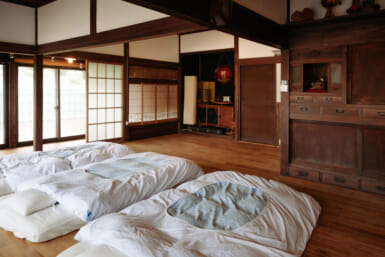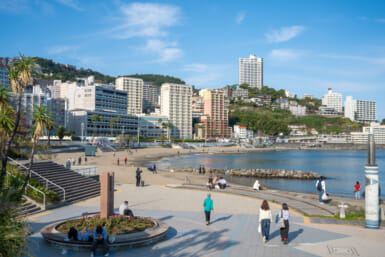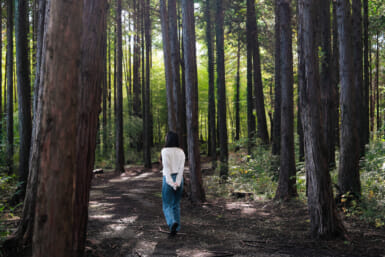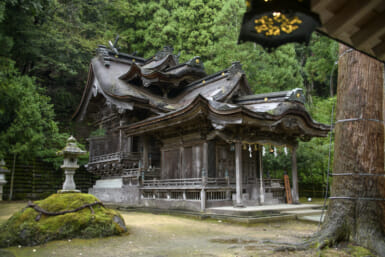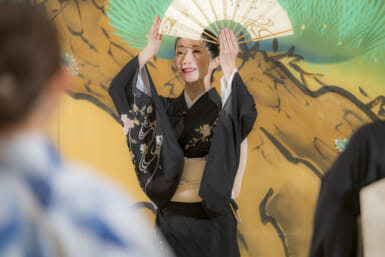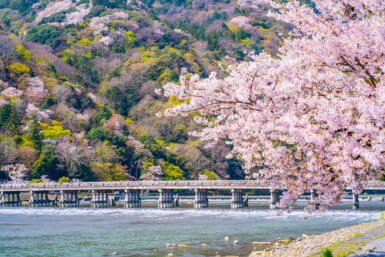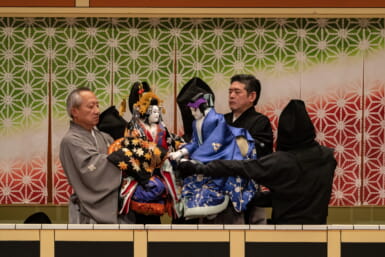Among the foreign visitors who traveled to Iwate Prefecture in the last decade, those who stayed at Rikuzentakata did everything but rest. Most of them were volunteers with a clear purpose of helping the locals rebuild a village that was destroyed by the 2011 Great East Japan Earthquake and Tsunami. Standing on higher grounds, now the area has elegant buildings and restored landscapes. But visitors are still helping its recovery in mysteriously simple ways.
Day 1
Upon arrival at Kiseki no Ipponmatsu Station, spend the morning at the Iwate Tsunami Memorial Museum, where objects recovered after the 2011 Tohoku earthquake and tsunami are displayed, revealing the magnitude of the tragedy that decimated the region. This multilingual memorial not only pays tribute to the victims, but also educates visitors on disaster preparedness and chronicles the ongoing restoration efforts.
The museum is located at Takata-Matsubara Tsunami Reconstruction Memorial Park. If you walk around the park and look towards the ocean, you’ll notice the seawall built to protect the village should disaster hit again. Miracle Pine, the sole tree left standing in a forest that was wiped away by the tsunami, is also visible. Although the tree died shortly after, it was restored and became a national symbol of endurance.
As you make your way back, you’ll find some of the freshest Tohoku cuisine just in time for lunch. Michi-no-Eki Takada Matsubara, located at the park, is a roadside station that serves regional specialties, such as oysters, wakame seaweed, scallops and “Takata no yume,” a type of rice that started being produced in the area after 2011 and has been recognized as one of the most flavorful in Japan.
The best time to visit Rikuzentakata is during the summer. The heat is milder than in Tokyo and the afternoon sea breeze isn’t too chilly for a stroll along Takata Matsubara Beach, which reopened in 2021.
Bustling with drum performances, summer nights in Rikuzentakata are almost as bright as day time. On August 7, hundreds of people pull massive glittering floats onto the roads to celebrate Ugoku Tanabata Matsuri. Floats appear to follow the rhythms of tapping drums as they make their way along the colorful streets. During the Kenka Tanabata Matsuri, dedicated to the same star festival, floats collide as if fighting. Both events gather lots of visitors keen to join in the celebrations. Although past editions of these events were canceled due to Covid-19 restrictions, they are worth attending once they resume.

The airy wooden bedrooms at Hakoneyama Terrace, a modern hotel nested on the green mountains, are the perfect place to stay. If you are just visiting the Terrace, make sure you’ve built up an appetite. The hotel café serves its own vegetable-based dishes, which are both healthy and flavorful. Hakoneyama Terrace is temporarily closed to the public, but as soon as it opens, visitors will flock back for delicious meals on the decks.
Day 2
After breakfast at Hakoneyama Terrace, a short walk will take you to Kesen Carpentry and Folklore Museum. Kesen carpentry is unique to the area, a centuries-old craft only a few experienced artisans know. They’re willing to reveal some of their secrets – their anecdotes are so interesting they may have you consider trying your hand at carpentry (at your own risk).

An educational morning calls for a break. Kurosaki Onsen has spectacular views of the ocean that you can soak in while relaxing in the hot spring water. And because nothing beats a good meal after an onsen, its restaurant has an expansive menu that includes all things seafood including ramen, abalone, sashimi, sea urchin and other delicacies.
The best way to end your trip to Rikuzentakata is hiking the Hirota Peninsula. You will see cliffs being washed by the turquoise stream of Sanriku Coast and old shrines and statues, vestiges of the area’s ancient history. Walking trails in the peninsula are not too demanding and can be enjoyed by beginners and experienced hikers alike.
During your stay at Rikuzentakata, you’ll notice the incessant rumble of construction work. After over a decade rebuilding, however, a lot of the work is already done. You can join the recovery efforts by simply enjoying a trip to the area and learning what the locals are eager to share with Japan and the world.
To learn more about what Rikuzentakata has to offer and how you can support revitalization projects, please visit www.amazingtrip.jp/index.html
Sponsored Post


